Name Christina Astonishing | Role Saint | |
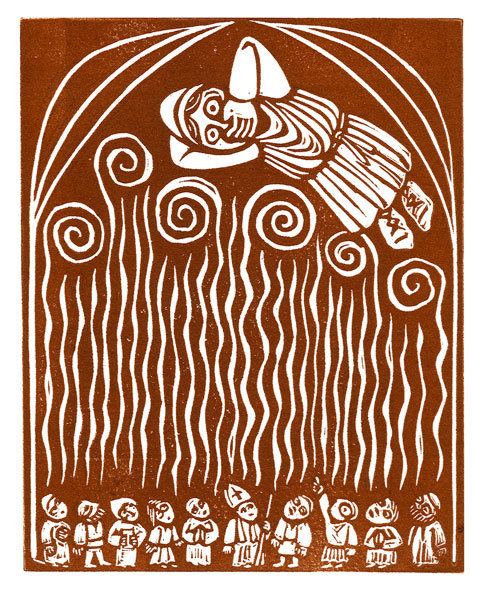 | ||
Died July 24, 1224, Sint-Truiden, Belgium | ||
St christina the astonishing spooky saints
Christina the Astonishing (c.1150 – 24 July 1224), also known as Christina Mirabilis, was a Christian holy-woman born in Brustem (near Sint-Truiden), Belgium. She was considered a saint in her own time, and for centuries following her death, as noted by her appearance in the Fasti Mariani Calendar of Saints of 1630, and Butler's Lives of the Saints - Concise Edition published in the 18th Century.
Contents
- St christina the astonishing spooky saints
- Nick Cave and the Bad Seeds Christina the astonishing
- Life
- Modern interpretations
- Patronage
- Literature
- References
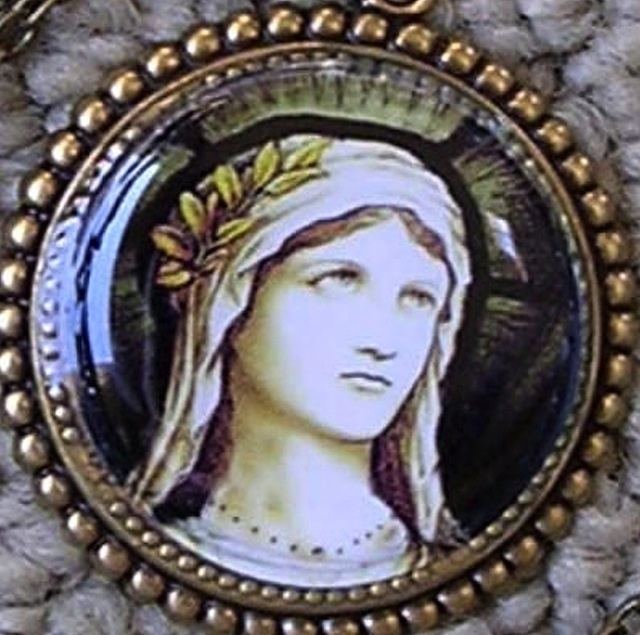
Her notoriety began when she was 21 years old. About to be buried and already in the church resting in an open coffin, according to the custom of the time, during the Agnus Dei of her funeral Mass she arose, stupefying with amazement the whole city of St. Trond, which had witnessed this wonder. She died at the age of seventy-four.
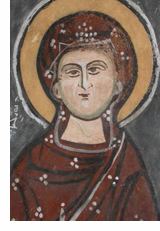
Christina receives attention today for the strange descriptions of her miracles as much as for her faith. Her memorial day is 24 July.

Nick Cave and the Bad Seeds - Christina the astonishing
Life

Christina was born to a pagan family, the youngest of three daughters. After being orphaned at the age of fifteen, she worked taking the herds to pasture. She suffered a massive seizure when she was in her early 20s. Her condition was so severe that witnesses assumed she had died. A funeral was held, but during the service, she "arose full of vigor, stupefying with amazement the whole city of Sint-Truiden, which had witnessed this wonder. "She levitated up to the rafters, later explaining that she could not bear the smell of the sinful people there."
She related that she had witnessed Heaven, Hell and Purgatory. She said that as soon as her soul was separated from her body, angels conducted it to a very gloomy place, entirely filled with souls whose torments endured there were such that it was impossible for them to describe. She claimed that she had been offered a choice either to remain in heaven or return to earth to perform penance to deliver souls from the flames of Purgatory. Christina agreed to return to life and arose that same moment. She told those around her that for the sole purpose of relief of the departed and conversion of sinners did she return. The words of a faithful maid had converted her into a Christian.
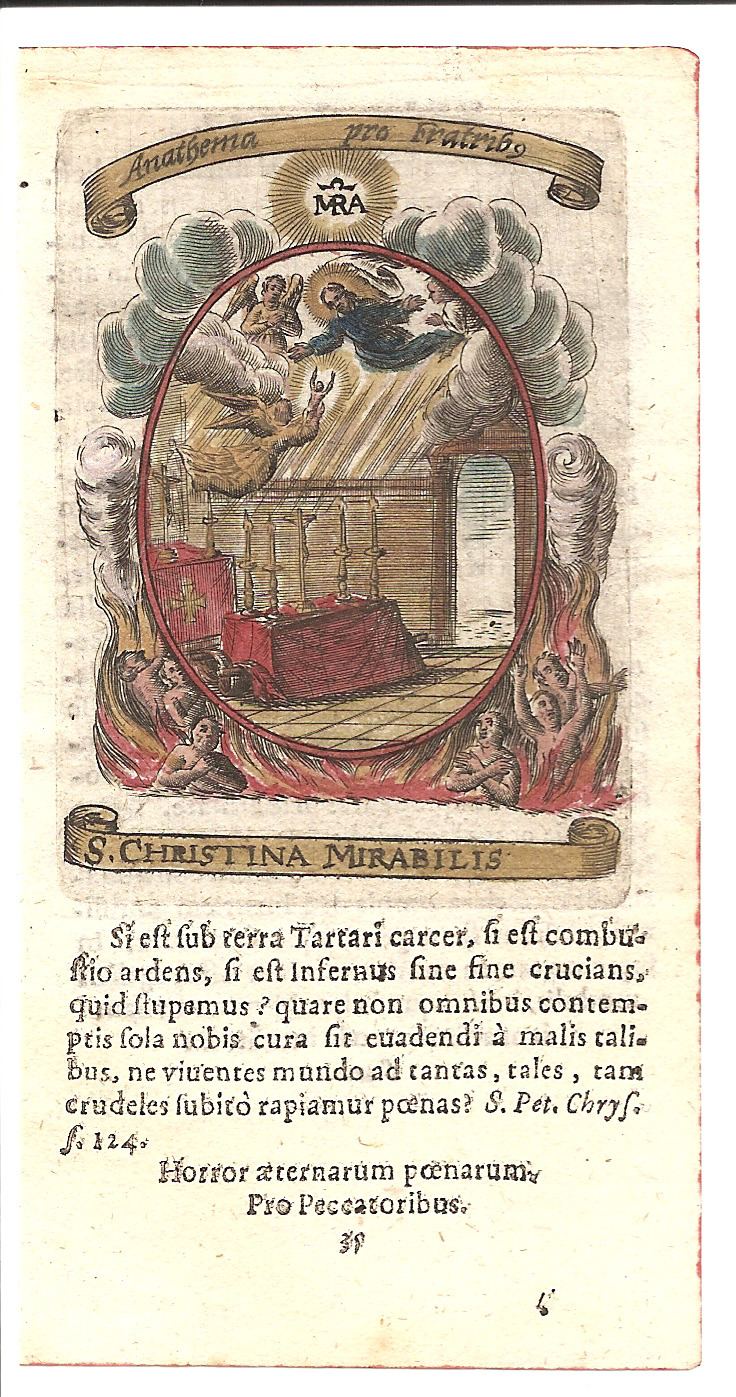
Christina renounced all comforts of life, reduced herself to extreme destitution, dressed in rags, lived without home or hearth, and not content with privations she eagerly sought all that could cause her suffering. At first, she fled human contact; and suspected of being possessed, was jailed. Upon her release, she took up the practice of extreme penance.
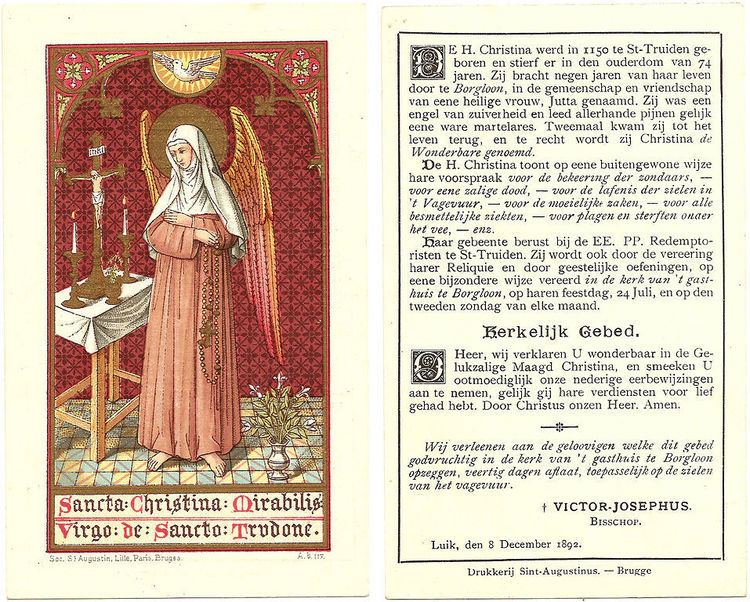
Thomas of Cantimpré, then a canon regular who was a professor of theology, wrote a report eight years after her death, based on accounts of those who knew her. Cardinal Jacques de Vitry, who met with her, said that she would throw herself into burning furnaces and there suffered great tortures for extended times, uttering frightful cries, yet coming forth with no sign of burns upon her. In winter she would plunge into the frozen Meuse River for hours and even days and weeks at a time, all the while praying to God and imploring God's mercy. She sometimes allowed herself to be carried by the currents downriver to a mill where the wheel "whirled her round in a manner frightful to behold," yet she never suffered any dislocations or broken bones. She was chased by dogs which bit her.
After being incarcerated a second time, she moderated her approach somewhat, upon her release. Christina died at the Dominican Monastery of Saint Catherine in Sint-Truiden, of natural causes, aged 74. The prioress there later testified that, despite her behavior, Christina would humbly and fully obey any command given her by the prioress.

"We have," says St. Robert Bellarmine, "reason for believing his testimony, since he has for guarantee another grave author, James de Vitry, Bishop and Cardinal, and because he relates what happened in his own time, and even in the province where he lived. Besides, the sufferings of this admirable virgin were not hidden. Every one could see that she was in the midst of the flames without being consumed, and covered with wounds, every trace of which disappeared a few moments afterwards. But more than this was the marvellous life she led for forty-two years after she was raised from the dead, God clearly showing that the wonders wrought in her by virtue from on high. The striking conversions which she effected, and the evident miracles which occurred after her death, manifestly proved the finger of God, and the truth of that which, after her resurrection, she had revealed concerning the other life."
Thus, argues Bellarmine, "God willed to silence those libertines who make open profession of believing in nothing, and who have the audacity to ask in scorn, Who has returned from the other world? Who has ever seen the torments of Hell or Purgatory? Behold two witnesses. They assure us that they have seen them, and that they are dreadful. What follows, then, if not that the incredulous are inexcusable, and that those who believe and nevertheless neglect to do penance are still more to be condemned?"
Modern interpretations
One person's opinion has held that Christina's Vita is an example of credulous medieval superstition. Historian Barbara Newman finds that there is reason to understand Christina's behavior in terms of hysteria, though Newman fails to account for the assertion that Christina flew from the floor to the rafters of the church after being resurrected from the dead.
Patronage
St. Christina the Astonishing has been recognized as a saint since the 12th century. She was placed in the calendar of the saints by at least two bishops of the Catholic Church in two different centuries (17th & 19th) that also recognized her life in a religious order and preservation of her relics. The Catholic Church allows and recognizes veneration of saints upheld by the laity; canonization is understood as a re-affirming of the more notable examples of Christian life as mentioned in the Catechism of the Catholic Church, and Saint Christina the Astonishing, having early Church recognition, is due her title of Saint as stated by the Church's Magisterium and Sacred Tradition.
Veneration of Christina the Astonishing has never been formally approved by the Catholic Church, but there remains a strong devotion to her in her native region of Limburg. Prayers are traditionally said to Christina to seek her intercession for millers, for those suffering from mental illness, and for mental health workers.
